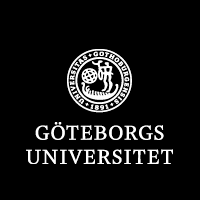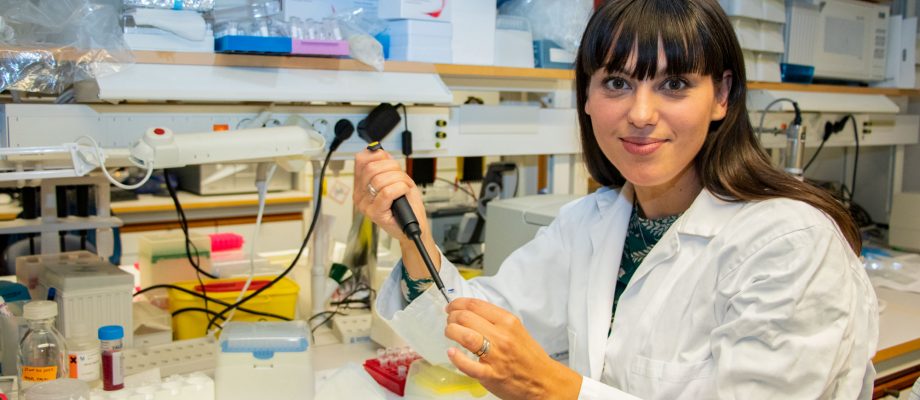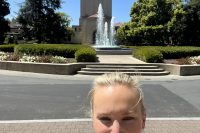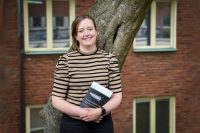STUDY. A new method published by researchers in Gothenburg in the journal Aging now enables a new approach to determine lifespan of mice in studies on aging. In addition to the improvement in research ethics that the method entails, it also provides a better scientific analysis of aging.
Researchers often use mice to investigate whether different genes, treatments or lifestyles can result in healthy aging with, for example, retained cognitive function and lower risk of age-related illnesses such as Alzheimer’s. In these aging studies, researchers compare how long animals that were affected or genetically modified live compared to animals living under normal circumstances.
An ethical solution
Basic medical research involves understanding how the human body works, with the goal of preventing and treating illness. Animal experiments play an important role in basic medical research and pharmaceutical research today, and they are surrounded by a strict regulatory framework in Sweden.

“We place a lot of importance on animal welfare and on adhering to the ethical rules that apply in Sweden. But in discussions at international conferences, we are often told that a mouse cannot be removed from a lifespan analysis, because that would ruin the whole study,” says Malin Hernebring, a researcher at Sahlgrenska Academy. She is the last author of the study recently published by the journal Aging in which the new method is presented.
An age span
In many other countries, including the United States, researchers believe that even sick mice need to remain in the experiment until they are very close to dying, because otherwise the results cannot be used.

“In our research group, we have had a continuous discussion about how we can report our data and compare it with studies in the field, since we did not keep all animals in the study until it was completed. When we came to the conclusion that we could classify the animals that were removed and use an age range instead, it felt like we had finally found our way around both an ethical and systematic problem,” says doctoral student Julia Adelöf, the first author of the study.
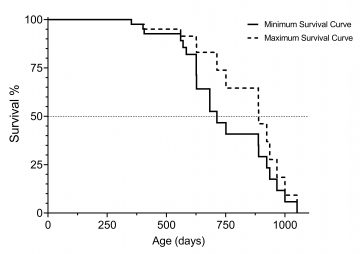
The method presented in the study is a simple mathematical model, which could in principle be used for all animal studies that investigate how lifespans are affected by various factors. Studies of aging traditionally present results in the form of a survival curve, which shows the percentage of animals in the group alive at a certain point in time. The new method instead presents two different curves: an underestimation and an overestimation of the lifespan. The animals removed due to ill health are classified as having died a natural death in one curve, which then becomes an underestimation of the lifespan. In the second curve, they are instead considered as healthy as the other mice when they were removed, and this then becomes an overestimation of the lifespan.
Ranges from minimum to maximum
“The actual lifespan falls into the range created between these curves,” says Hernebring. “We see that lifespans from other studies of aging correspond well with the lifespan that is created, depending on how we classify the animals taken out of the study due to ill health.”
The method conforms with what is known as the 3R Principle (Refine, Reduce, Replace), an important linchpin for all animal experiments in Sweden. The principle states that everyone involved in research based on experimental animals is to actively refine the experiments to minimize the impact on the animals, to reduce the number of animals used and to replace animal experiments.
A measure of aging – not illness
From a scientific perspective, Julia Adelöf acknowledges additional benefits with the new method:
“In these kind of studies, there are always variations in how long the animals live, and relevant aging effects will be apparent regardless of whether the lifespan is measured by our method or the traditional way. Another important advantage of our method is that we are really studying aging and not illness.”
An innovative method
At an early stage of her doctoral studies at Sahlgrenska Academy, Adelöf realized that she was not comfortable with how studies of aging traditionally have been conducted. “If researchers start using our method, it will revolutionize these types of studies in terms of animal ethics.”
At a conference this summer, Adelöf presented the method and other findings in the current study. The method attracted interest from several international researchers, who considered it to be an innovative solution to research problems that were previously considered difficult to circumvent.
Title: Conclusions from a behavioral aging study on male and female F2 hybrid mice on age-related behavior, buoyancy in water-based tests, and an ethical method to assess lifespan
Publication: Aging
Link: https://www.aging-us.com/article/102242/text
TEXT: ELIN LINDSTRÖM
